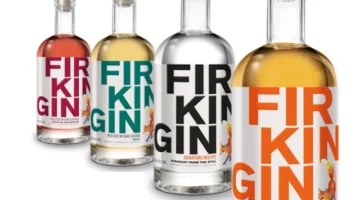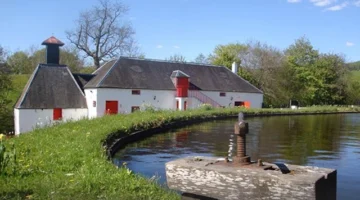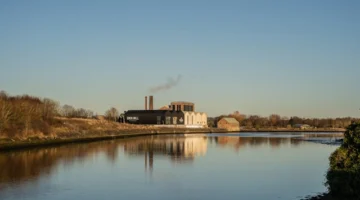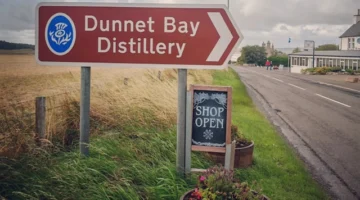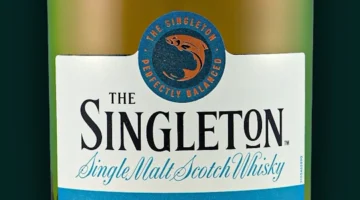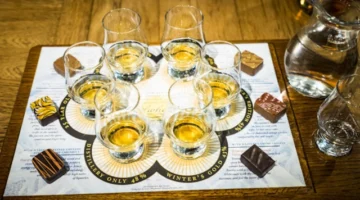What is Whiskey?
Travel Distilled takes a look at What is Whiskey? and talks about the difference between whiskey and whisky, and whiskies from Scotland, Ireland, the USA, Canada, and elsewhere in the world.
What is Whiskey? That might seem an obvious question, but do you know the difference between a single malt, a blended malt, and a blended whiskey? Do you know the difference between Scottish whisky and Irish whiskey, or between Canadian whiskey, and whiskey from the USA? Or indeed, what the difference is between whiskey and whisky?
If the answer to all those is ‘Yes, I do’, then you might want to go and read something about tequila instead. But if the answer is ‘No, I don’t,’ then read on and you soon will do.
Is it Whiskey or Whisky?
To begin with the supposedly simple stuff, why is whisk(e)y spelled two different ways? Well, the spirit was probably first made in Ireland, and the name there comes from the first word of the Gaelic phrase uisce beatha, meaning the water of life. The first word is pronounced very similarly to whiskey/whisky.
The Irish took the whiskey-making process to Scotland, and when hearing that what they were making was uisce beatha, decided that the first word was ‘whisky’. The drink and the name for it spread at a time when there was no consistent spelling of words. For many years both whiskey and whisky were used in the USA, and it was only about fifty years ago, with the arrival of newspaper style guides which required consistency from their writers, that whiskey became the favored choice. Even so, some distinguished distillers, including Maker’s Mark, opt for the whisky spelling.

In other countries, local spelling conventions meant that one or other of the options was chosen. Today, the whisky spelling is used in Scotland, Canada, India, Australia, and Japan, and in most other places, while the whiskey spelling is mainly used in Ireland and the USA.
Neither is right or wrong, although if you use the word whiskey when referring to Scottish whiskies you’ll soon know about it. The Scots are very sensitive like that. Also, as an aside, Scotch refers only to the drink and not to the people. If you say to a Scottish person, ‘Oh, so you’re Scotch,’ they will quickly let you know of your error, believe me.
On this website, I use the spelling appropriate to the country, so it will be Irish whiskey or Scottish whisky, but if using the word in general, and just talking about whiskies, I’ll use the whiskey spelling as a nod to Ireland where the drink was first made (and my own Irish ancestors).
What is Whiskey in Ireland?
As the Irish invented whiskey, let’s look at how they make it, and then come on to the Scots and other countries. When it comes to smoking the malt, they rarely use peat in Ireland as they do in Scotland, giving a less smoky taste, but this isn’t a legal requirement. Some distillers do use peat for a deliberately smoky taste.
Irish whiskey is distilled three times, and must be matured for at least three years in wooden casks. Note that the label can spell the word as either whiskey or whisky, so if you see Irish Whisky on a label it’s not an imposter.
There are several types of Irish whiskey too. One is a single pot-still whiskey. This is, pretty obviously, made in a pot still, and it’s made by a single distillery and uses a mix of malted and unmalted barley. The Irish also make a single malt whiskey, which is using a single malted barley from a single distillery. Single grain whiskies are made not from barley but using corn, wheat, or rye. Blended whiskies can be anything – they can be a resulting of blending good whiskies together, or bad whiskies, or a good with a bad, or several whiskies, or even by using a neutral spirit to affect the resulting flavor.

What is Whisky in Scotland?
Like Irish whiskey, Scottish whisky must be aged for at least three years, but in Scotland they must use oak barrels. In Ireland it’s merely wooden barrels, though they often do use oak. Scottish whisky is traditionally distilled twice, and while this isn’t a legal requirement, most distilleries stick to this.
The whisky must be produced at a single location, though once it is produced it can be matured and bottled elsewhere in Scotland. Scotland has several different whisky-producing regions, and whisky from the island of Islay is going to taste different from a Speyside whisky or a whisky from Shetland or Orkney.
To further complicate things (and you thought whiskey was just whiskey?), there are five distinct categories of Scottish whisky: single malt Scotch whisky, single grain, blended malt, blended grain, and blended Scotch whisky. By now you can probably work out what those mean. A single malt is made using one batch of a particular malted barley. A single grain uses one grain other than barley. A blended malt uses more than one type of malted barley, and a blended grain uses other malted grains. A blended whisky is made by blending different whiskies.

What is Whiskey in the USA?
The USA has several distinct types of whiskey, which are strictly defined and regulated. Note, though, that the regulations only apply within the USA. Some countries accept some of these regulations, but not every country does. In Canada, for example, you cannot call something bourbon if it doesn’t comply with the US definition of bourbon whiskey. Elsewhere, that may not apply and distillers can call their whiskies bourbon without them obeying the US definition, but they won’t be able to export them to the USA.
The different types of American whiskey are:
Bourbon: must be made from at least 51% corn, and aged in new charred oak barrels. There’s no minimum ageing period, but it must be aged for at least two years if you want to call it straight bourbon. In practice, most good bourbon is aged. Other regulations also apply, like it must be made in the USA, and must be at least 40% ABV when bottled.
Corn whiskey: must be made from at least 80% corn but has no minimum ageing period. This means it also qualifies as bourbon.
Malt whiskey: must be made from at least 51% malted barley, but has no ageing requirement. There is currently no legal definition in the USA for a single malt whiskey as so few people have tried making one, but those that do, tend to follow the Scottish definition, above.
Rye malt whiskey: must be made from a minimum of 51% malted rye. No ageing period required.
Rye whiskey: must be at least 51% rye. If aged it must be in charred oak barrels, and after two years in the barrels can be called straight rye whiskey.
Wheat whiskey: must contain at least 51% wheat and if aged for two years in new charred oak barrels can then be called straight wheat whiskey.

What is Whiskey in Other Countries?
Canadian whisky can use any grains or a blend of grains, but must be aged for at least three years in wooden barrels and be at least 40% ABV when bottled.
Japanese whisky has no strict definition but is most closely modeled after Scottish whisky.
Many Indian whiskies are made from a molasses base so aren’t really whiskies at all!
One way to learn more about whiskey is to join the Caskers World of Whiskey Club.




